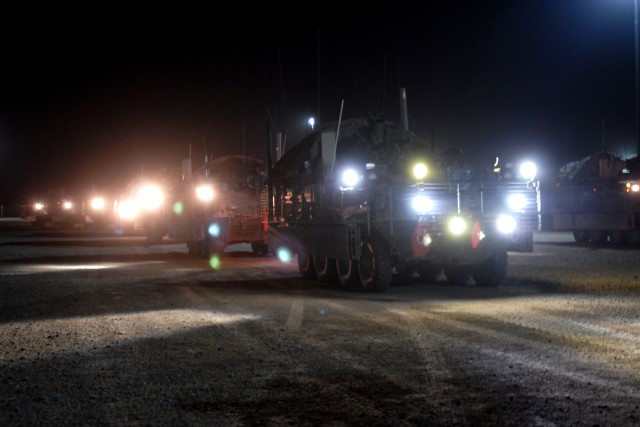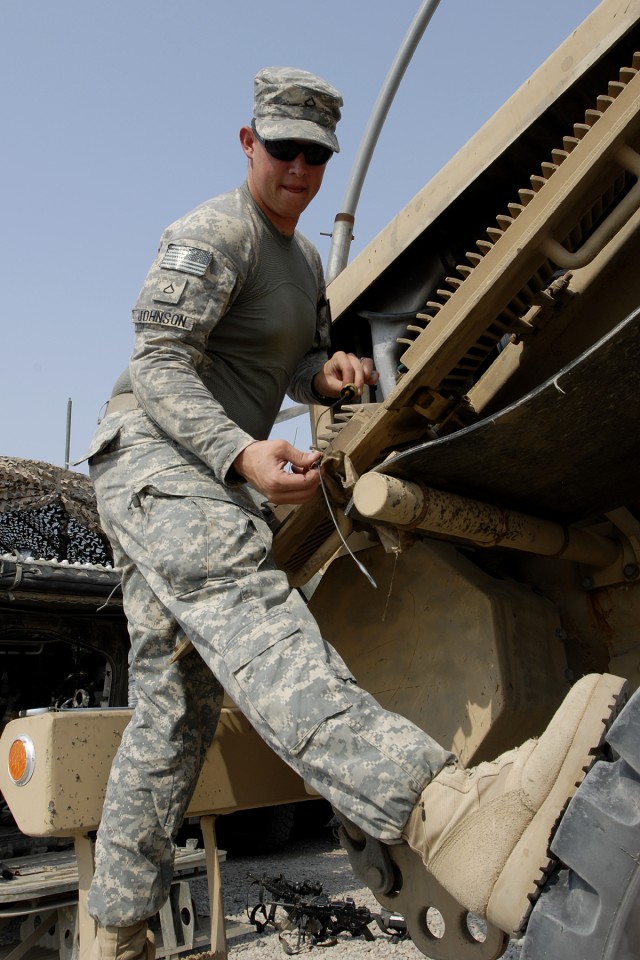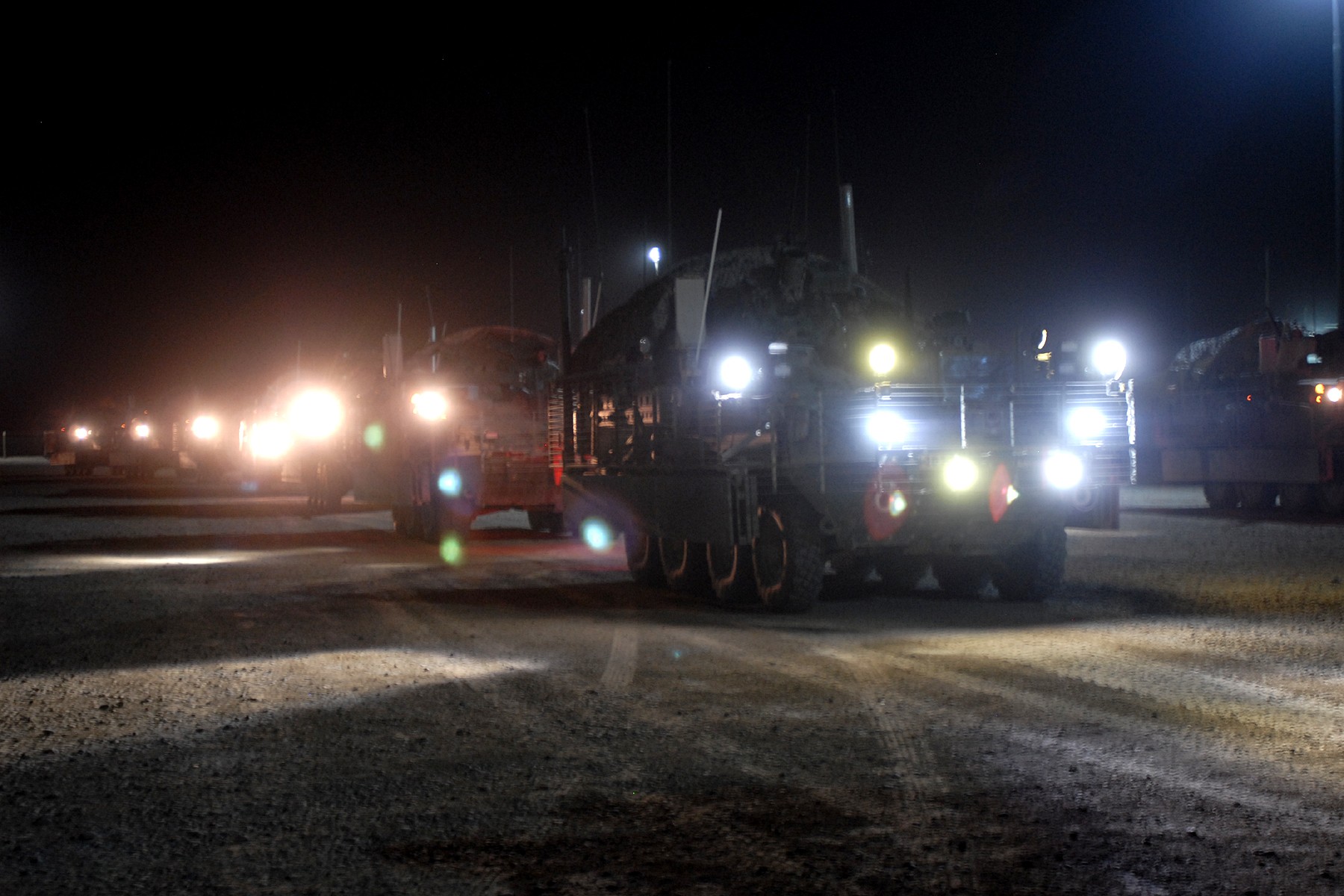CAMP TAJI, Iraq (Army News Service, Aug. 20, 2010) -- Through the dusty driver's side window, Pfc. Thomas Johnson could see the final stretch of dirt road leading to the Iraq border.
As one of the lead elements in a company-size formation of Stryker armored vehicles, Johnson and Spc. Adam Porter -- both combat engineers with 38th Engineer Company, attached to 4th Stryker Brigade Combat Team, 2nd Infantry Division -- had driven collectively more than 400 miles on the unruly and sometimes deadly roads from here to Kuwait in a Mine-Resistant Ambush-Protected vehicle.
Soldiers of the 4th Stryker Brigade Combat Team have just completed a yearlong tour supporting U.S. Division-Center area of operations in and around Baghdad, assisting, training and advising the Iraqi Security Forces.
As a memoir of the last combat brigade in Iraq during Operation Iraqi Freedom, the rest of the crew said their final goodbyes to Iraq into their digital cameras before entering Kuwait and ending their final deployment to Iraq.
The team of combat engineers helped clear the way for the symbolic convoy out of Iraq, reminiscent of U.S. forces first pushing into Iraq at the beginning of OIF in 2003, driving down a route similar to the one servicemembers entered the country through several years prior.
The nearly seven-year conflict came to an end as the last tires crossed the border into Kuwait, ushering in Operation New Dawn and marking a new beginning for the people of Iraq.
Most Soldiers, including Johnson and Porter, said they did not expect to be behind the steering wheel, leaving Iraq by ground vehicle to make the drive to Kuwait.
"I thought we'd fly out of here," Porter said.
The longing to redeploy eventually wore down Soldiers in the brigade to the point where the mode of exit no longer mattered, so long as it meant they were returning home soon.
While people in the back of Strykers and MRAPs had the opportunity to nap during the two-day trip, the gunners, drivers and vehicle commanders stayed awake, focused and alert to their surroundings. Energy drinks, daytime naps and casual conversations among crew members kept the weary drivers going.
"I was thinking about doing my job proficiently and getting everybody there safely," Johnson said. "If I don't get everyone there safely, then we fail the mission. And I'm all about completing the mission," he said, mentioning that part of his mission was returning home to his wife.
The team made it without sustaining any attacks, which is a major improvement from veteran combat engineers' experiences during earlier OIF rotations.
Because security has improved over time as Iraq has become more stable, certain aspects of later deployment cycles have changed as well.
"Yeah, we trained to kick in doors, we trained to clear buildings, we trained to react to contact, but every single one of us knew what we were going to be doing -- riding in a truck looking for (improvised explosive devices)," Porter said.
For Johnson, a Phoenix native, and Porter, an Ashland, Wis., native, training for driving the Buffalo-style MRAP, a large vehicle with a mechanical arm for interrogating potential IEDs and threats, began during the brigade's June rotation at the Joint Readiness Training Center at Fort Polk, La.
Soldiers trained on a 5-ton truck frame with a Buffalo cab welded onto it. It was not until arriving in Iraq they had an opportunity to get behind the wheel of the real thing.
A year later, as Johnson drove his team past the gates leading out of Iraq and concluding their last patrol in Iraq, he said he felt a long-awaited feeling.
"It's a feeling of success that you did what you were expected to do for a whole entire year, then coming to the end of your tour and finishing it out strong," he said.
(Pfc. Kimberly Hackbarth writes for 4th SBCT, 2nd Inf. Div., USD-C)




Social Sharing